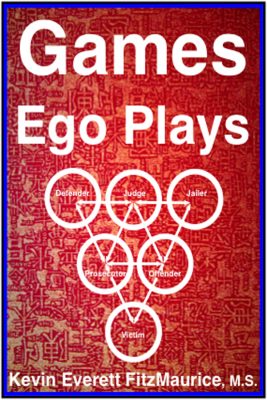What Is REBT? How Is it Different from CBT?
- Garden will teach you an easy and effective Cognitive Behavioral Therapy (CBT & REBT) system.
- REBT practitioners update your practice for greater effectiveness and efficiency with Not.
“I suggest that people take the challenge and adventure of creating and maintaining a profound attitude of unconditionally accepting themselves, other people, and world frustrations, no matter what occurs in life. They better make it an integral, unforgettable part of their living.” —Albert Ellis
- Read and discover the best diagrams and maps of how people play games with your mind and heart.
What is REBT (Rational Emotive Behavior Therapy)?
“To help people achieve the three basic REBT philosophies of unconditional self-acceptance, unconditional other-acceptance, and unconditional life-acceptance, cognitive, emotional, and behavioral methods, which are described in this monograph, are used.” ―Albert Ellis, Rational Emotive Behavior Therapy
- REBT is a philosophy and counseling approach for applying three main principles.
- The three main beliefs of REBT are USA, UOA, ULA.
- The three main goals of REBT are also USA, UOA, ULA.
The Three Main Beliefs, Goals, Principles, & Strategies of REBT
“REBT is a conscious practice of moving clients to achieve greater unconditional self-acceptance (USA), unconditional other-acceptance (UOA), and unconditional life-acceptance (ULA) which makes it superior to CBT and other therapies.” —Kevin Everett FitzMaurice
“If you would stop, really stop, damning yourself, others, and unkind conditions, you would find it almost impossible to upset yourself emotionally—about anything. Yes, anything.” —Albert Ellis and Robert A. Harper, A Guide to Rational Living, Third Edition, p. 127
The 3 Unconditionals of REBT
- USA, unconditional self-acceptance.
- UOA, unconditional other-acceptance.
- ULA, unconditional life-acceptance.
REBT Much More than Disputing Demands
- While many think that REBT is disputing demands into preferences, that is only a popular technique of REBT.
- Stoicism and Buddhism were frequently cited by Albert Ellis (the founder and main developer of REBT) as influencing the development of REBT. And both are deeply concerned with acceptance.
- Ellis firmly believed that the best way to help counseling clients to change was to help them to make a philosophical change.
- In Feeling Better, Getting Better, Staying Better, Albert Ellis first identified unconditional self-acceptance (USA), unconditional other acceptance (UOA), and unconditional life acceptance (ULA) as the three underlying principles of REBT theory and practice.
- Read and discover the best diagrams and maps of how people play games with your mind and heart.
REBT Is Cognitive, Emotive, & Behavioral Therapy
“No individual—not even Freud himself—has had a greater impact on modern psychotherapy.” –R. Epstein, “The Prince of Reason,” Psychology Today, 2001
REBT Focuses On USA, UOA, & ULA
- As the name implies (Rational Emotive Behavior Therapy), any cognitive, emotive, or behavioral technique that helps a client achieve more USA, UOA, or ULA can be part of an REBT practitioner’s toolbox.
- Listen to tapes of Ellis doing counseling, and you will see that he often focused on USA, not demands.
- Read Ellis’s magnum opus, Reason and Emotion in Psychotherapy, Revised and Updated, and you will see that Ellis focused on USA and self-esteem issues throughout the book.
- This focus on moving clients to achieve greater USA, UOA, and ULA makes REBT something other than generic CBT, which has no established or agreed upon philosophical core or focus.
- CBT is more an assortment of techniques sharing the basic premise that changing thinking changes attitudes, behaviors, and feelings.
- This same philosophy (USA, UOA, ULA) allowed Ellis to apply REBT to real-world issues such as how to achieve world peace.
- Journal of Cognitive Psychotherapy; Summer1992, Vol. 6 Issue 2, p. 79 (June 1992), “Rational-Emotive Approaches to Peace,” by Ellis, Albert (https://www.questia.com/library/journal/1P3-1545175481/rational-emotive-approaches-to-peace)
- Read and discover the best diagrams and maps of how people play games with your mind and heart.
REBT & Demands (Shoulds & Musts)
“Expectation is the root of all heartache.” —Willian Shakespeare
“Desire is the root of all suffering.” —Second Noble Truth of Buddhism
Demandingness Involved in Other Issues
- The four focus points for REBT (low frustration tolerance, self-and-other ratings, awfulizing, demands) can all be reduced to demands.
- Low frustration tolerance (LFT) demands an end to frustration or is a demand to get what you want.
- Ratings of self and others demand that you appear higher and not lower (superior to others a.k.a. high self-esteem).
- Awfulizing demands that you are protected, rescued, or have it easy.
- However, demands can be reduced to expectations.
- Shoulds and musts are about expecting something either to happen or not to happen. The stronger the expectation, the stronger the demand is for the expectation to become or control reality.
- Desires can also be reduced to expectations.
- Without expectations, there can be no desires.
- This relationship between demands, desires, and expectations can lead to discovering acceptance as a principle that can overcome all three at once.
- Acceptance is beyond the problems caused by neurotic or unnecessary expectations, desires, and demands. This characteristic of acceptance is why REBT developed over time to focus on USA, UOA, and ULA.
- However, preferences (the REBT replacement for demands) are still expectations and mild demands or desires for those expectations to come true. Preferences, being milder than demands, lead to mild forms of disappointment when they fail or are not fulfilled.
- It would be unwise to get rid of all expectations, desires, and demands just as it is wise to understand what expectations, desires, and demands are causing you unnecessary conflicts, difficulties, and negative stress.
“Buddha said that life is suffering. However, life is not suffering; ego is suffering.” —Kevin Everett FitzMaurice
“Buddhism teaches that desire is the cause of suffering. However, desire is not the cause; expectations are the cause of suffering.” —Kevin Everett FitzMaurice
11 Irrational Beliefs Based on Ellis’s Magnum Opus
- Information on the 11 Irrational Beliefs.
- Read and discover the best diagrams and maps of how people play games with your mind and heart.
REBT’s Evolution
- REBT focuses on helping people to cope and problem-solve so that people might live more fruitful and happy lives.
REBT’s 3 Main Focuses for Interventions
- Extreme, inflexible, and rigid thinking are seen as getting in the way of coping and problem-solving.
- Lack of acceptance is seen as getting in the way of coping and problem-solving.
- Self-esteem demands and desires are seen as getting in the way of coping and problem-solving.
Progression to USA, UOA, ULA
- Initially, REBT was primarily focused on extreme, inflexible, and rigid thinking, with some emphasis on self-esteem and acceptance.
- Over time, REBT focused more on acceptance and self-esteem.
- Finally, REBT, guided by Albert Ellis, made the brilliant combination of acceptance, self-esteem, and inflexible thinking into three fundamental principles: USA, UOA, and ULA.
3 Keys: Coping, Acceptance, Problem-Solving
- Coping can be understood as acceptance.
- Acceptance can be understood as the negation of inflexible thinking.
- Problem-solving can be understood as the freedom to come up with the best possible solutions and to experiment with them.
REBT & CBT
- REBT was the first CBT.
- REBT is the existential CBT.
- REBT is the humanistic CBT.
- REBT is the deepest form of CBT.
- REBT is the philosophical form of CBT.
- REBT is the comprehensive form of CBT.
- REBT is the unconditional-acceptance form of CBT
- REBT is the form of CBT that deals with who and what you are.
- Read and discover the best diagrams and maps of how people play games with your mind and heart.
REBT Materials Other than Books
“In the course of REBT, the focus is largely on what is happening to clients during the present, and particularly on what they tell themselves about what is happening.” —Albert Ellis
Albert Ellis Institute
- Albert Ellis made many tapes of his counseling sessions.
- The Albert Ellis Institute used to have a large collection of materials, including audiotapes, CDs, books, pamphlets, and copies of journal articles that are no longer offered. Perhaps a new demand for these products will lead to their becoming available again.
- I suspect the Institute still has them and would be willing to sell them if you contacted the Institute in NYC.
Albert Ellis Institute
145 East 32nd Street, 9th Floor
(Between 3rd & Lexington)
New York, NY 10016
212.535.0822 | Fax: 212.249.3582
Website: albertellis.org
Hours: Monday – Friday 9:15 am – 8:45 pm
E-mail us: info@albertellis.org
Other REBT Resouces
- Albert Ellis Live! is a book of transcripts of Ellis doing therapy that can still be found.
- Growth Through Reason is an older book of transcripts of Ellis doing therapy that can also still be found.
- A good source for REBT books: REBT Network.
- Another good source for REBT books & videos: REBT Books.
- REBT Websites for Information & Books: List of Links
- Read and discover the best diagrams and maps of how people play games with your mind and heart.
Related Information on REBT & Thinking Errors
- 7 Thinking Errors of CT
- 9 Fundamental Thinking Errors
- Albert Ellis: “New Yorker” Article
- Albert Ellis on FitzMaurice’s Books
- Article on FitzMaurice’s Contributions to CBT & REBT
- CBT, CT, & REBT Cognitive Psychotherapies: List Pages
- Cognitive Psychotherapy Quotations
- Counseling Issues: Free Help
- Ego & Self-Esteem Fast-Facts
- Emotional Responsibility: List Pages
- Exercises & Techniques: List Pages
- Feeling & Coping: Fast-Facts
- Musts: Friend & Foe
- REBT (Rational Emotive Behavior Therapy): List Pages
- REBT Is Deeper than CBT, CT, & other Counseling Theories
- REBT Video Demonstrations Online
- REBT Website (www.albertellisinstitute.org)
- REBT Websites for Information & Books: List of Links
- REBT’s 4 Issues As a System
- REBT’s 10 Must Scripts for Life
- REBT’s ABCs of Emotions
- Self-Esteem Issues: List Pages
- Unconditional Self-Esteem (USE): Defined
- Read and discover the best diagrams and maps of how people play games with your mind and heart.
- Read and master the life skill of acceptance using the best combination of CBT, REBT, & Stoicism.
6 Groups of Topics Menu
- 1. Pages by Topic
- 2. Fast-Facts by Topic
- 3. Quotations by Topic
- 4. Poems by Topic
- 5. Scripture by Topic
- 6. Websites by Topic
- Read and master the life skill of acceptance using the best combination of CBT, REBT, & Stoicism.
9 Skills & Topics Menu
- 1. Anger Skills & Topics
- 2. Blame Skills & Topics
- 3. Communication Skills & Topics
- 4. Coping Skills & Topics
- 5. Counseling Skills & Topics
- 6. Praying Skills & Topics
- 7. Recovery Skills & Topics
- 8. Responsibility Skills & Topics
- 9. Thinking Skills & Topics
- Read and master the life skill of acceptance using the best combination of CBT, REBT, & Stoicism.



